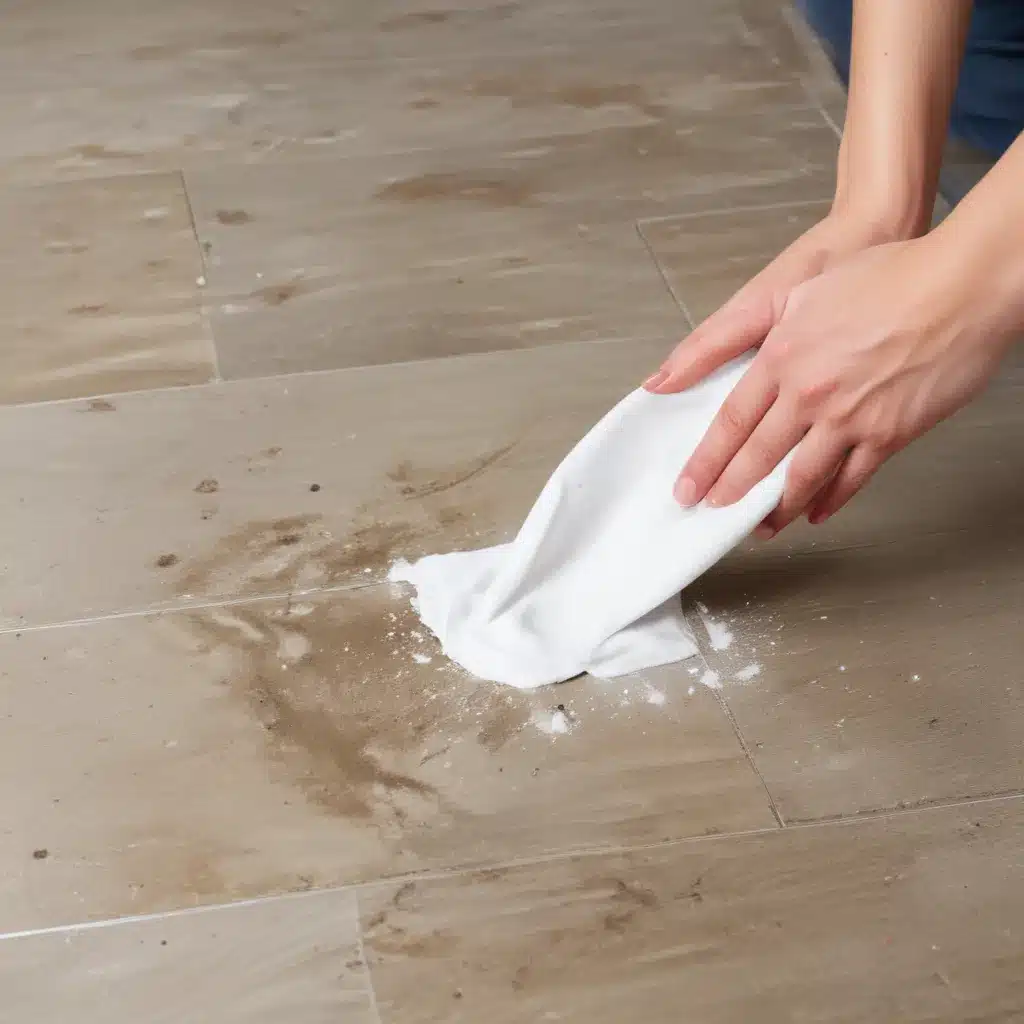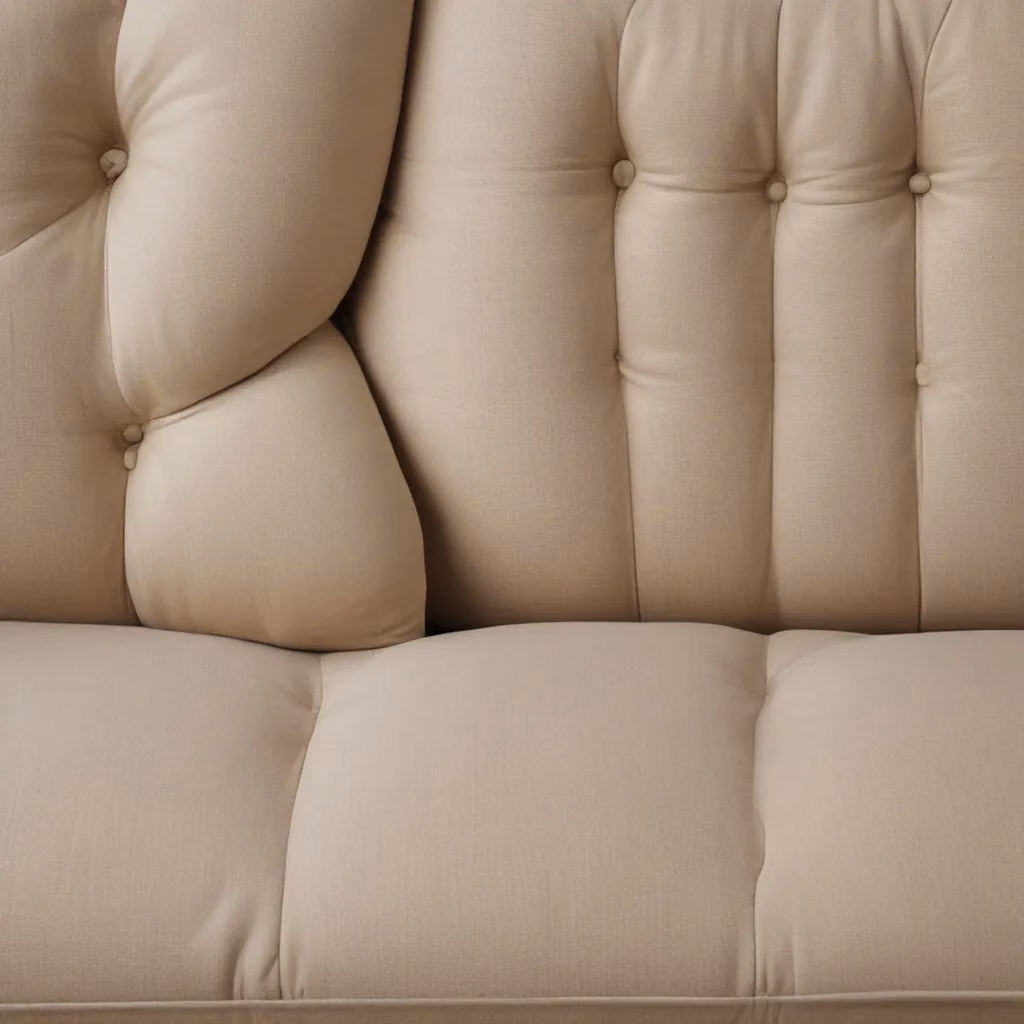Tackling Old Stains with Persistence and Creativity
By this point, I’m reasonably certain that the majority of responsible furniture owners are aware that spills and stains on upholstery should be cleaned immediately with all due haste. It’s the right thing to do and stands the best chance of successful stain removal. But let’s consider for a moment the times when it’s just not possible to immediately handle a stain.
A quick search of the internet might lead you to believe that no one in the history of the world has failed to blot and treat a spill in a timely manner. That you and your upholstery are utterly doomed because your stains have set-in and nothing – at least nothing short of inventing a time machine, crashing the lively spaghetti and red wine party that marred the vintage set of dining chairs you just scored at the flea market, and cleaning those spills when they occur – will be of any use in removing the stains.
All kidding aside and in spite of several Google search result pages to the contrary, there are things you can do to revive a stained piece of upholstery even if the staining took place long ago. In unfortunate true stories from my life, a few years ago, unbeknownst to me, a mover cut himself and bled on all of my living room furniture while loading it into storage for three months. I know, and I only discovered the well-set-in stains upon moving into my new apartment. I was blown away – there were blood smears on everything! I really wish this person had spoken up and taken advantage of the ample first aid kit I tote with me during moves, but he didn’t. So, in addition to being worried about the mover and what his work situation must be like if he’s afraid to mention being wounded on the job, I had a lot of set-in stains to deal with. Really, a lot.
Unveiling the Stain’s True Extent
Heres what I learned along the way about getting old stains out of upholstery. Upholstery should be vacuumed frequently to keep the fabric in good shape and prevent dust and crumbs from settling into the body of the furniture. In the case of an old stain, it’s surprising how much a simple vacuuming can help the fade the stain. It should always be the first step in dealing with this kind of damage – you don’t really know what you’re dealing with or how bad the stain truly is until all of the loose particles have been sucked away by the vacuum.
Next, check your upholstery cleaning codes. This gets you on the right track of how to best tackle your stain. Some pieces can be cleaned with water, others will require moving directly into various solvents. If your furniture lacks a cleaning code, which is often the case with vintage and antique pieces that have been modified over the years, do a simple spot test on a hidden piece of upholstery. I like to test water, vodka, and vinegar because they’re always my first choices for cleaning before getting into the more heavy-hitting chemical stuff.
Gentle Stain Removal Techniques
If your furniture can be cleaned with water, hitting the stain with a bit of steam loosens it up and makes the stain more responsive to treatment. I typically just grab my iron and use the steam button for this application – I don’t find it necessary to drag out the steamer to deal with small areas.
This is the phase where you cross your fingers and hope that a simple solution is all that’s needed. If your furniture can be cleaned with water, mix a little dish soap with cool water and, using a wrung-out sponge, blot the stain with the soap mixture. Take care not to rub at the stain – at this point, it’s unlikely that the stain will set in deeper, but rubbing can weaken and pill your fabric. Next, rinse the sponge and use just water to blot out some of the soap mixture. Press dry with a cloth or paper towels.
If your furniture cannot be cleaned with water, try using vinegar or vodka on a cloth to blot the stains. The smell of both the vinegar or the vodka will disappear when the area is dry.
Bringing Out the Heavy-Duty Cleaners
If a more gentle clean doesn’t work, it’s time to go heavy-duty and break out the tough cleaners. Any cleaner you choose to use should be spot tested in a discreet place on the piece of furniture. Some people swear by Resolve or Tuff Stuff, and blogger Jenny Komenda has had some truly remarkable results with Folex.
I’m fortunate that my stains came out without having to venture into this territory, but on several separate occasions when an entire glass of red wine or a mug of hot coffee has spilled, Wine Away has been a real lifesaver. It managed to entirely remove red wine stains caused by an unfortunately placed glass being flung across the room by an exuberant hand gesture from the two brand-new cream side chairs in my living room.
Persistence Pays Off
If your stain has survived this entire cleaning process, you are dealing with one stubborn stain. As exhausting – and possibly irritating – as the process can be, doing it all over again can give you the result you’re looking for. The previously mentioned wine on white chairs situation took two full passes before the stains came out. I really thought when I entered Phase 2 for the second time that there was no way these stains were going anywhere, but perseverance paid off, and the stains disappeared.
The seemingly impossible-to-remove, set-in stain has been conquered. Hooray! Feel free to share your accomplishments with friends, so long as you offer to help out if they ever have need of your stain-removing powers.
Tackling Fresh Stains with Finesse
Just in case a spill happens in the future that you can take care of immediately, here are some tips and tricks for how to spot clean upholstery stains that have just happened.
According to the experts at COIT, keeping your upholstery stain-free starts with prevention. Consider these tips to keep spills at bay:
- Apply Upholstery Protectors: Use fabric protectors to create a barrier against spills. These products can make cleanup easier and prevent stains from setting.
- Set Ground Rules: Minimize the risk of accidents by keeping food and drinks away from upholstered furniture, especially when kids are involved.
- Regular Maintenance: Vacuum your upholstery weekly to remove dust and crumbs. This not only keeps it looking fresh but also prevents dirt from embedding into the fabric.
Tackling Specific Stains
Spills from colorful summer treats, especially those with food dyes, can leave noticeable marks on your upholstery. Here’s how to remove these stains:
| Stain Type | Removal Approach |
|---|---|
| Grease (pizza, tacos) | Most stain removal techniques rely on water, but the oil in these foods is hydrophobic, so a different approach is necessary. According to COIT, the key is to tackle grease stains on furniture upholstery by blotting with a cloth and using a degreasing agent like dish soap or an enzyme cleaner. |
| Dye-based Stains (ice cream, soda) | Different dyes require different approaches. The COIT team suggests testing a hidden area first to ensure the cleaning method won’t damage the fabric, then using a combination of blotting, mild detergent, and potentially enzymatic cleaners to lift the stain. |
If you’re struggling with stubborn stains that won’t go away, the experts at Apartment Therapy recommend considering hiring professional cleaners. At COIT, their experts specialize in removing tough stains from upholstery, as well as carpets and drapes. A professional clean not only tackles stains but also removes dust, pollen, and other allergens, contributing to healthier indoor air and a cleaner home.
By following these guidelines, you can enjoy your summer treats without worrying about lasting stains on your furniture. Be prepared for any spills with an emergency stain removal kit containing the right tools and products. Armed with these tips and techniques, you’re now fully equipped to handle summer spills and keep your upholstery looking its best.
Whether dealing with a fresh accident or tackling old stains, remember: patience and the right approach can make all the difference. Don’t let spills set – act quickly, and you can restore your furniture to its former glory.




